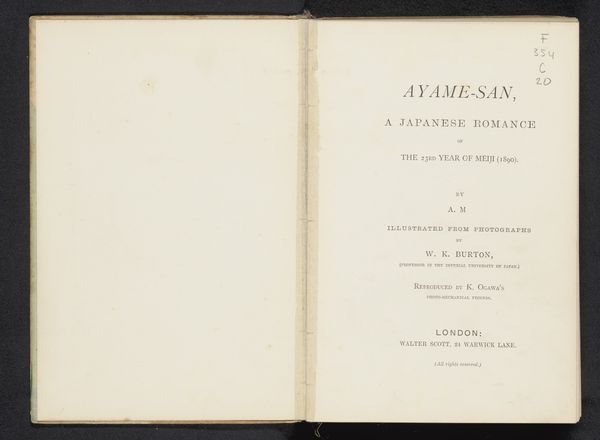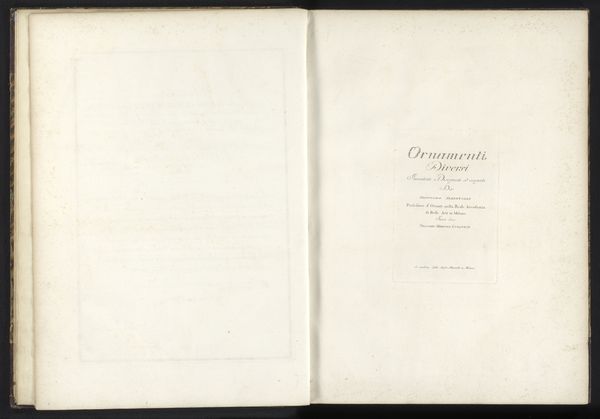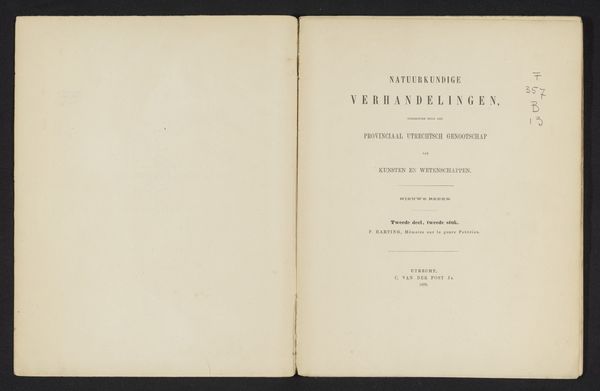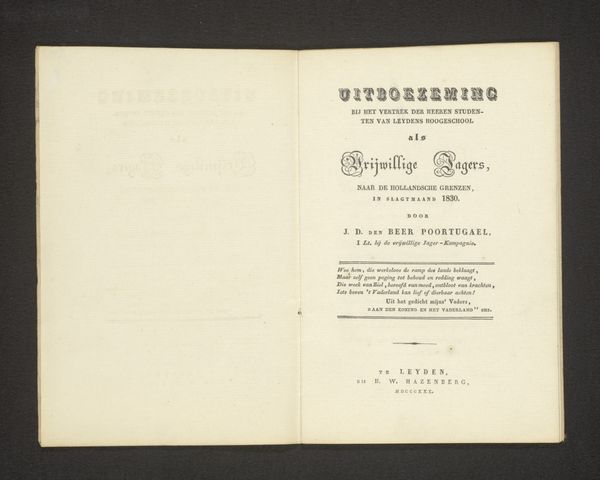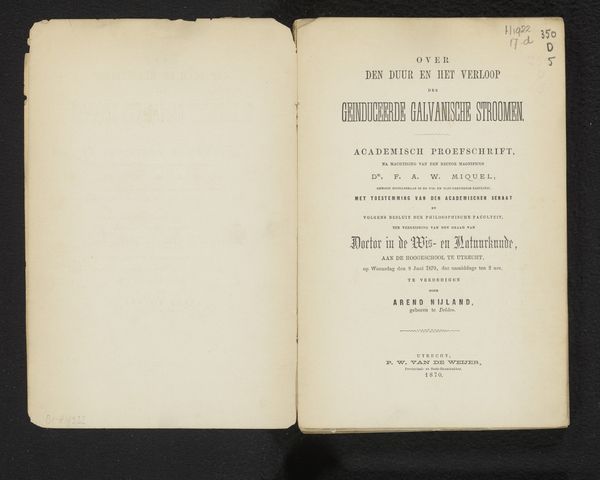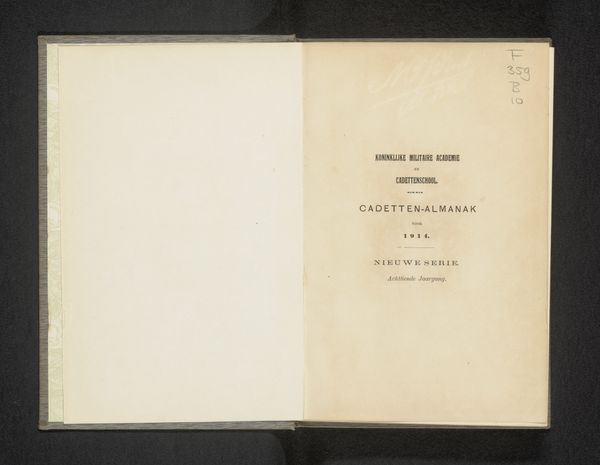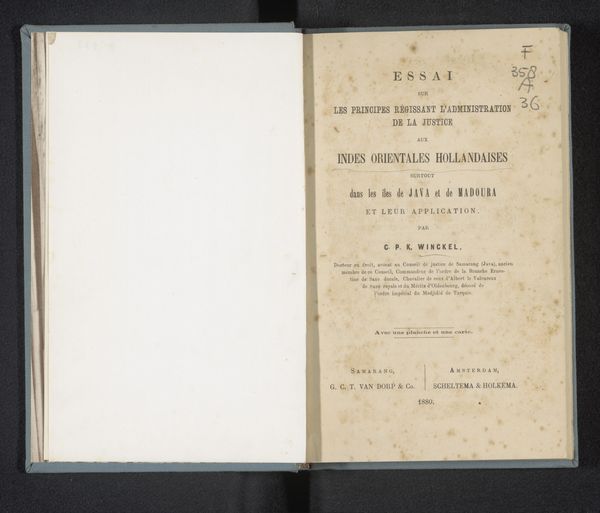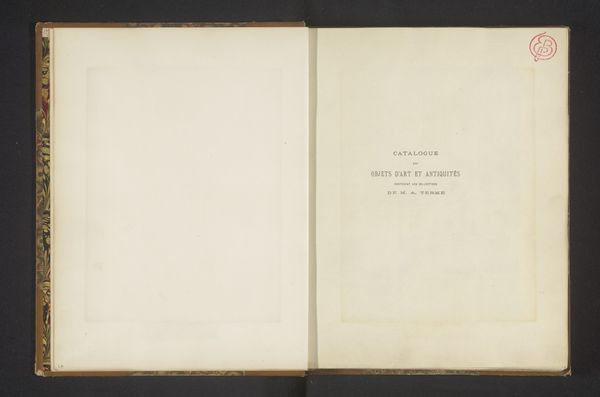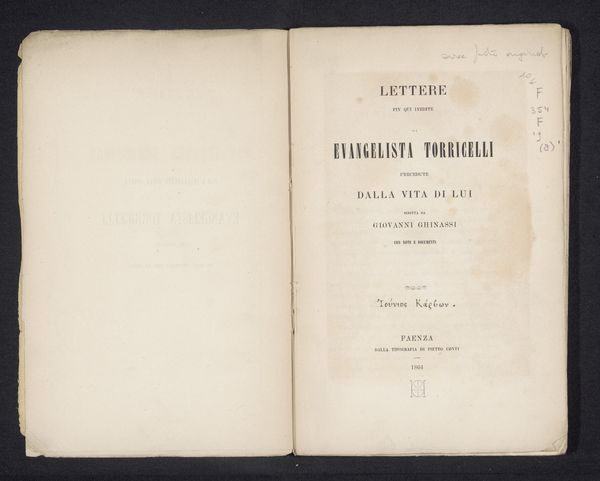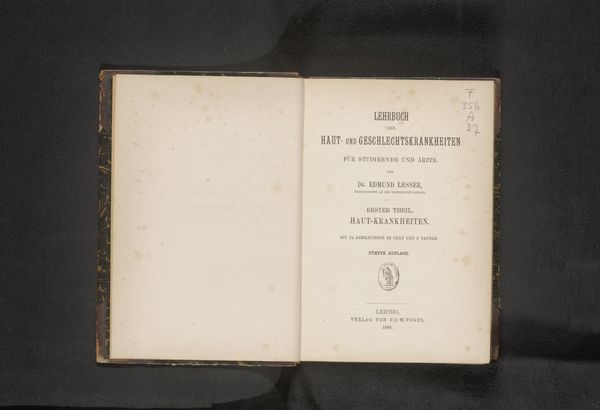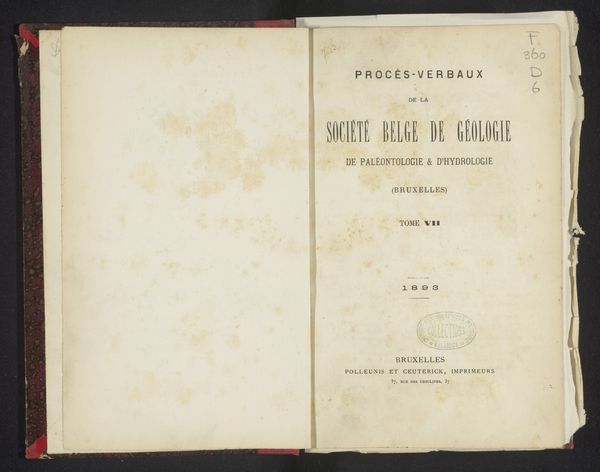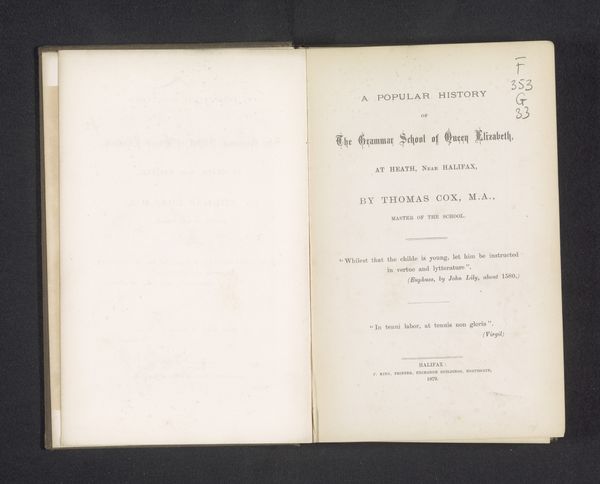
print, typography
# print
#
typography
Dimensions: height 22.2 cm, width 13.5 cm
Copyright: Rijks Museum: Open Domain
Curator: Looking at this print, I can't help but feel a sense of stillness, a quiet dignity radiating from the page. Editor: That’s a beautiful way to put it. This is “De Vrede,” or "The Peace," a print dating back to 1830. It’s attributed to Samuel Philippus Lipman, a lawyer based in Amsterdam, now held here at the Rijksmuseum. A straightforward title page in a time of turmoil, perhaps. Curator: Absolutely, but the word "peace" in such stark, unwavering lettering against the off-white paper feels almost like a whispered plea, especially when you notice that the title occupies so much of the space, yet is so concisely contained. I also love the quote included—a thoughtful consideration on what is truly left to us in trying times. Editor: Precisely. This seemingly simple title page can be interpreted as a sign of its historical context: created amidst the revolts of the 1830s, when revolutionary fervor swept across Europe, even reaching the Netherlands. Publications like these would reflect anxieties and desired outcomes among the populace, giving figures such as Lipman an even wider impact on Dutch society. Curator: So it’s not just a nice-looking typeface? I see how a lawyer’s publication, focused on peace no less, becomes a statement. But the elegance of the typography, almost neoclassical, still gives me that feeling of reserved hope. Editor: The publishers, A. Zweesaardt and J. Guykens, likely chose that font carefully, thinking about how certain visual cues could be more reassuring in politically charged situations. In times of unrest, cultural productions offer refuge, solace, or even galvanize support, shaping society more visibly than any act in parliament. Curator: So what feels intimate also reveals societal tensions. That changes my first impression considerably. I came for peace, and got political struggle. Editor: Which in itself is quite appropriate when discussing history—peace never truly exists in a vacuum, it’s the end of every turmoil and is, thus, impacted and informed by political events and tensions. I do hope visitors consider what kind of "peace" they would have written about during a time of unrest.
Comments
No comments
Be the first to comment and join the conversation on the ultimate creative platform.
